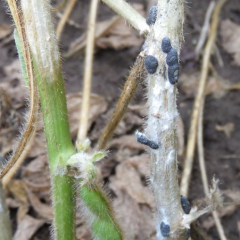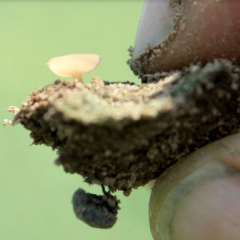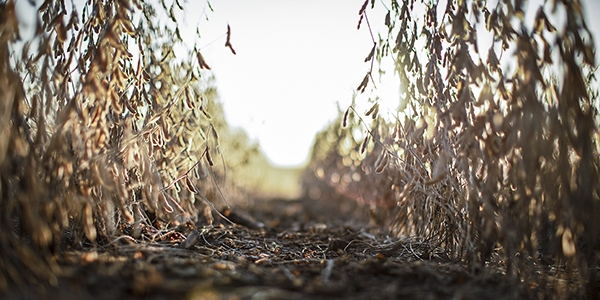AGRONOMICSUPPORT
YOU CAN TAKETO THE FIELD
How To Prevent White Mold
If you’re seeing white mold in your soybeans fields this year, there’s not much you can do for this year’s crop at this point. However, being able to identify and manage the disease in the coming years will be critical.
 White mold favors conditions where soil moisture is adequate, canopy closure is there or close, and moderate temperatures (less than 85 degrees Fahrenheit) are observed. If you are finding white mold in your fields now, the sclerotia can overwinters and will try to infect future soybean crops. Sclerotia are the small black structures that look like rat droppings fount on the plant.
White mold favors conditions where soil moisture is adequate, canopy closure is there or close, and moderate temperatures (less than 85 degrees Fahrenheit) are observed. If you are finding white mold in your fields now, the sclerotia can overwinters and will try to infect future soybean crops. Sclerotia are the small black structures that look like rat droppings fount on the plant.
The year following white mold presence in your soybeans, any of the remaining sclerotia that is found in the top two inches of soil can produce mushroom-like structures called apothecia. Apothecia will only be produced if the weather, soil and canopy structure are fitting for growth.
 The spores that come out of the apothecia are called ascospores, and apothecia can produce millions of them. Ascospores can only infect the plant through a soybean flower, and if infection occurs, lesions will form that damage and girdle the stems. Once girdled, the plant will shut down and die.
The spores that come out of the apothecia are called ascospores, and apothecia can produce millions of them. Ascospores can only infect the plant through a soybean flower, and if infection occurs, lesions will form that damage and girdle the stems. Once girdled, the plant will shut down and die.
To manage White Mold, consider planting with wider row spacing. If you have been planting soybeans in 7.5”-15” rows in the past, consider 30” row spacing to allow more air movement between the rows. More air movement will keep the soil drier, which inhibits spore development.
Another consideration is reducing your planting population. There have been numerous studies showing that low soybean populations will still yield well, so consider reducing populations to allow more air flow through the canopy.
No-till practices can be used to manage White Mold, as well. Last year’s crop residue will act as a natural barrier and when the apothecia emerge, they will shoot their ascospores right into last years corn stalks. If the spores cannot reach a flower, they cannot infect the plant.
Fungicides are also an option and there are several fungicides labeled for white mold. If you’re using a fungicide to manage white mold, make sure your application is done between R1-R3.
If you have questions about White Mold, or any soybean disease, contact your local LG Seeds Technical Team Agronomist or STAR Partner.
Photo Credit: Michigan State University - MSU Extension






Technical Team Agronomist